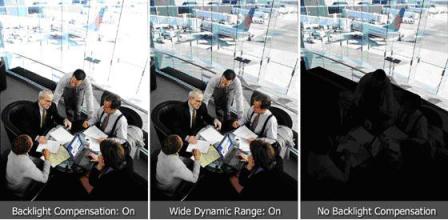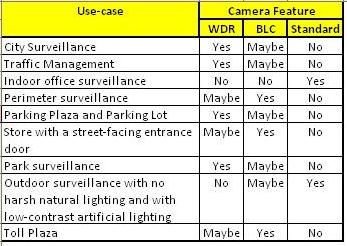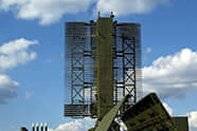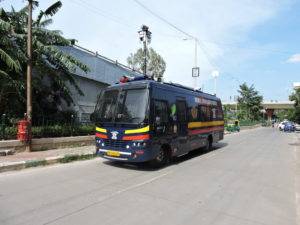Introduction
As video surveillance installations become more common in India, in both public and private spaces, the question of how useful the video footage is, for forensics, is increasingly being asked. There have been several incidents, in the past 12 months, where the video surveillance footage should have allowed the police to solve crime: an open-and-shut case, so to say.
The reality is that in all those cases, the quality of the video footage was so poor, that there just as well may have been no video surveillance at all. Most often, the issue is with the ability of the camera to capture images of acceptable quality under high-contrast lighting conditions.
This brief looks at the factors that need to be considered when deciding on a camera specification for use in high-contrast lighting conditions. You may find it useful to peruse an earlier Tech. Brief – January 2010 – on Low-Light & No-Light Surveillance, before going further.
High-Contrast Lighting Conditions
The factor most often ignored by planners is the quality of lighting, at a video surveillance camera location, during a typical day and night of operation: the position of the sun relative to the face of the camera and the image frame, the position and intensity of external (artificial) lighting once the sun sets, extraneous sources of light that accompany objects in the image frame, light reflected by the object in the image frame, etc.
In certain situations, there is a high contrast in the intensity of light between various zones in the image frame, and this is what is referred to as high-contrast lighting. Examples of such situations would be a store door opening into a (brightly lit) street, a park with a combination of open spaces and wooded groves, a parking plaza (especially at night, when cars will be moving with headlights on), and a city road.
Standard surveillance cameras do not capture frames with consistently good image quality across different zones of the frame, in high-contrast lighting conditions. This is because, standard surveillance cameras build a frame in relation to the brightest source (zone) in the image, making details in the darker zones of the image difficult to identify or distinguish.
The solution is to go in for a camera that adjusts for these high contrasts in the intensity of light.
Wide-Dynamic Range (WDR) and Back-Light Compensation (BLC)
The two approaches to handling the high-contrast lighting scenario are Wide-Dynamic Range (WDR) hardware and Back-Light Compensation (BLC) algorithm.
 | WDR The dynamic range of a digital camera (dependent on the sensor) is defined as the ratio of maximum light intensity measurable to minimum light intensity measurable. Standard sensors support a contrast ratio of 1000:1 (60dB). In order to improve the quality of an image containing a high contrast of light intensity, WDR sensors are available. These sensors cost more, but deliver a significantly higher contrast ratio. A WDR sensor can be designed as non-linear, in that different parts of the sensor are triggered depending on the intensity of light; capturing the image in one frame. WDR capability can be also delivered through multi-frame imaging, where the camera captures multiple versions of the image; with each version at a different contrast ratio. The camera then combines the frames, and eliminates the darkest and brightest versions of the zones to produce the WDR frame. Most WDR camera implementations are multi-frame imaging implementations, due to the strength of this approach in capturing images in real-time. |
 | BLC BLC is logic implemented in the DSP to allow the camera to adjust the light so that the main object is not over-exposed. Typically, the frame is broken into multiple zones, exposure levels are calculated for each zone, and areas of over-exposure rectified. BLC can be implemented as applicable to the entire frame or as zone-selectable. In case of the former, the main object has to occupy a significant portion of the frame, for the correction to work optimally. In case of a zone-selectable implementation, the main object need not occupy a significant portion of the frame, and need not be in the centre of the frame. |
Both approaches offer a solution to high-contrast lighting conditions. BLC is more widely available, as it does not require a highly sensitive sensor, and can thus be implemented at a lower cost. A WDR camera requires a specialized sensor which typically costs significantly more. However, this cost advantage of a BLC-featured camera is at the expense of a relatively lower quality image. The figure below shows the output of a BLC-featured camera, a WDR camera, and a standard camera.
 |
| Figure 1: Comparison of image quality using BLC-featured, WDR, and standard cameras. Credit: World Helmsman, www.wh-tech.com. |
It is quite obvious that the greatest level of detail is in the WDR camera image. The main difference between the image output of the BLC-featured camera and the WDR camera is the level of detail of objects not designated as the main object. In the image in the middle, it is possible to make out details of activities in the background (not the main object). WDR combines the best of the BLC-featured and standard camera outputs.
Conclusion
The problem is that video surveillance planners rarely spend time thinking about the use-case for the video surveillance system, and end up purchasing surveillance cameras ill-suited to the needs of the users. Video surveillance planners need to simulate the actual camera setting and then decide on whether to put up the additional investment that a WDR camera or a BLC-featured camera require.
A quick look-up table of a few video surveillance scenarios and the best type of camera to go in for is provided in the table below.
 |
| Figure 2: Use-cases for WDR, BLC-featured and standard cameras. |
Mistral offers a range of WDR cameras, BLC-featured cameras, and standard cameras for various video surveillance use-cases.



